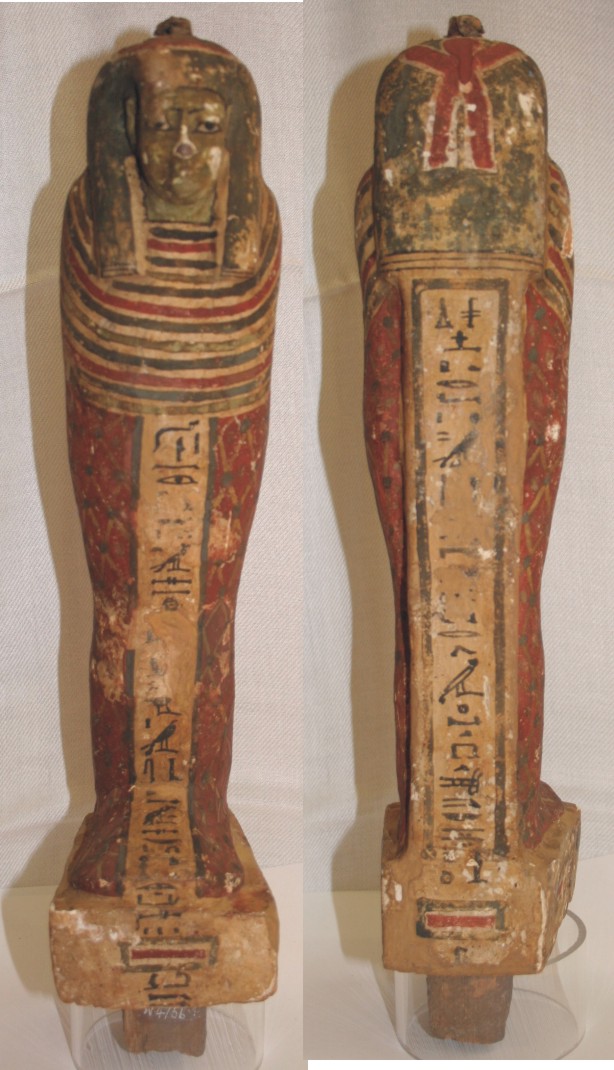Ptah Sokar Osiris figures
Ptah-Sokar-Osiris figures
 W475b Figure belonging to the Lady of the House Ptahirdis
W475b Figure belonging to the Lady of the House Ptahirdis
W2051 Back section of a figure
Ptah-Sokar-Osiris figures combine three figures connected with rebirth, in one.
They occur from the Late Period in the tombs of private individuals and seem to develop from the 19th Dynasty statues of Osiris and of wooden shabtis. The Osirian type figure began around 1300 BC but the true ‘three in one figure’, the Ptah-Sokar-Osiris figure, seems to develop around 700 BC. There is however no sudden change. They seem to be part of a general tradition of placing mummiform items such as miniature coffins, shabtis, etc. into tombs.
Ptah was the creator god of Memphis, often shown as a mummy holding a staff and wearing a skull cap. He was a god of craftsmen. During the Old Kingdom the cult of Ptah impinged on that of the hawk god Sokar and by the Late Period, Osiris was also a ‘member of the team’. Osiris was the ‘king of the dead’ with whom the dead wished to join. Sokar was also a Memphite god of craftsmen. Three was the number of plurality for the Egyptians and from New Kingdom times a number of triads of deities develop.
The figures usually take the form of a mummiform human-headed wooden figure on a hollow wooden pedestal. Sometimes the figures themselves are hollow. They may contain parts of the Book of The Dead. The figures with bases sometimes contain part of a mummified corpse. Usually the head has an atef crown (curled ram horns, sun-disc and plumes) or a wig and feather crown.
Sometimes miniature falcons, perhaps Sokar-hawks, were put on the base of the figures and faced toward the figure. The falcons seem to be crouching, perhaps indicating that were mummified. Alternatively they may be depicted this way to suggest that they are covered like the image of a god. Statues of gods in temples were ritually dressed.
The inscriptions show the identity of the owner and express their wish to become like Osiris. The writing of a person’s name ensured their continued survival.
Tomb wall fragment showing Ptah and Ptah-Sokar, among other gods
Further Reading
Griffiths, G. 1996.Triads and Trinity. Cardiff:University of Wales Press.
Raven, M.J., 1979. Papyrus Sheaths and Ptah-Sokar Osiris Statues. OMRO 59-60 (1978/79), 251-296.